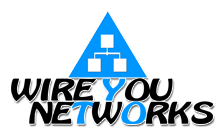Data Loss
When people think of a disaster they often think of natural or man made catastrophes such as floods, fires, tornadoes or chemical spills. When it comes to business downtime, catastrophes such as those mentioned above are of only a small percentage. Hardware failure is the most common and makes up about 55% of all business downtime, with hard drive failures being the most common.
Within the small business community 50% of companies do not back up their data, so the loss of a hard drive can be a nightmare. Hard drive failure means the bad drive(s) must be replaced and reinstalled. The operating system must be reinstalled and the data on that machine restored from backups. If you are one of the 50% who don’t backup, it means restoring from paper files or losing the data all together. For most data dependent and time crunched businesses this can be a very hard nut to crack.
A properly implemented Cloud Backup and Disaster Recovery Solution can
- prevent data loss,
- help keep downtime to a minimum
- prevent it all together.
The first stage of this solution and the least complex would be backing up offsite to a Cloud service provider’s data center. This is similar to using a service such as DropBox on your PC, but for business you might want something that’s a little more robust and configurable. Offsite (Cloud) backup is a simple, effective, and very affordable way to prevent data loss. In the event something should go wrong the files you backed up are available to restore from the Cloud usually from anywhere on any device.
The second and more complex stage of this solution would be to utilize Virtual Server Protection and Data Replication. How this works is your server(s) data and applications are replicated (copied) to virtual servers in your service providers data center. If your physical server(s) for whatever reason go down or inaccessible you can failover to the Virtual Servers from any location and keep right on working. How fast you can failover to the virtual server(s) is known as Recovery Time Objective (RTO) and at what point your data is recovered i.e; Recovery Point Objective (RPO) is depended on the level of service your company requires. This will be determined by your company’s needs for RTO and RPO when setting up the solution with a provider.
Silent Killer
The second most common hardware failure is a network failure caused by a router or switch. If you want to see an office descend into chaos this will do it. This can be an external problem such as your Internet service provider (ISP) having an issue on their Wide Area Network (WAN) or your internal Local Area Network or LAN. If it’s your ISP you can have an Internet outage for hours or longer. This can be kept to a minimum with a second Internet connection from a another ISP on a totally different network. To keep your downtime at a minimum you would use a Smart Router to failover to the second Internet connection if the main connection goes down.
If the network failure is on your LAN it can take hours to track down the problem and replace and reconfigure the bad router or switch. This can mean the loss hours and even a days work sometimes. A Network Monitoring Solution that will poll the devices on a constant basis and alert you when a device fails can ease the downtime. The key is to keep a spare router or switch (twin) already configured on hand to replace the bad device if it fails. This also means you will have to use quality routers and switches that allow monitoring by the Network Monitoring Solution.
Both hardware and network failures come in many other forms, but for the sake of this post we stuck with the most common. No matter how large or small your company is data loss is the silent killer of business. If you don’t have a Disaster Recovery plan you can be setting yourself up for failure.
[aio_button align=”center” animation=”none” color=”red” size=”small” icon=”hdd” text=”Disaster Recovery” relationship=”dofollow” url=”http://www.wireyou.com/disaster-recovery-2/”]
